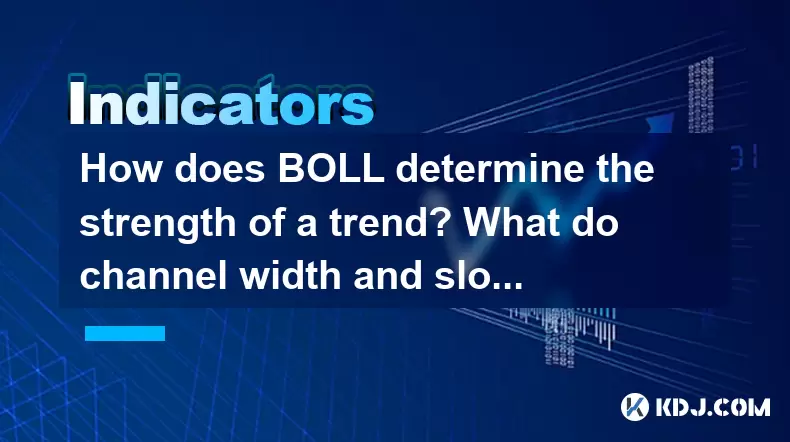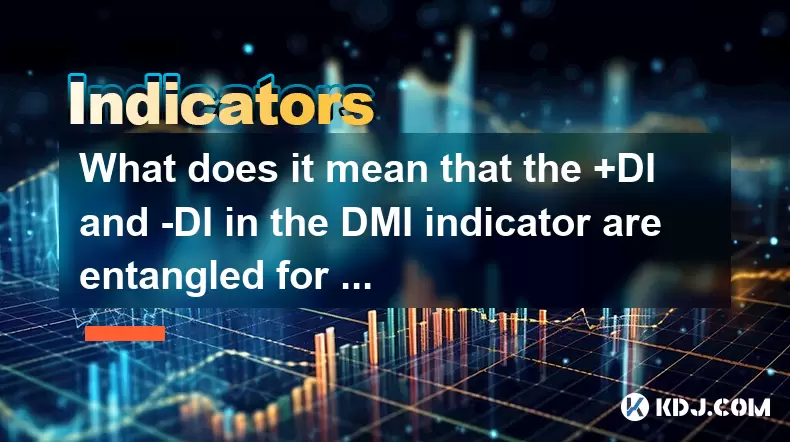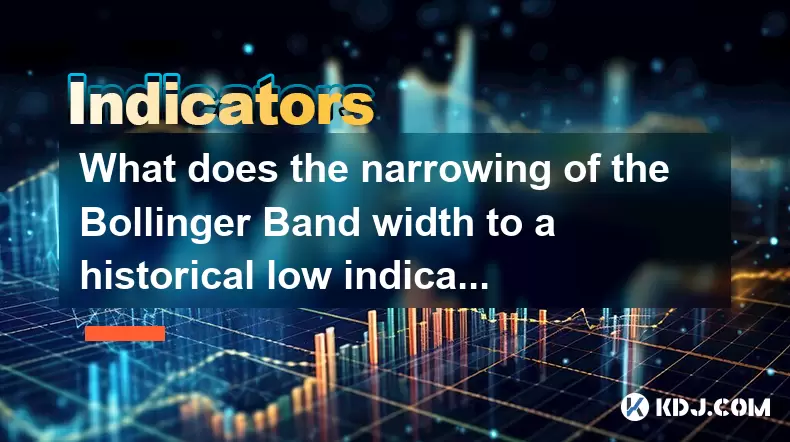-
 Bitcoin
Bitcoin $103,838.1703
5.33% -
 Ethereum
Ethereum $2,364.7328
10.94% -
 Tether USDt
Tether USDt $1.0007
0.03% -
 XRP
XRP $2.0950
9.02% -
 BNB
BNB $634.7170
5.25% -
 Solana
Solana $142.0264
11.70% -
 USDC
USDC $1.0000
0.00% -
 TRON
TRON $0.2728
5.18% -
 Dogecoin
Dogecoin $0.1598
10.80% -
 Cardano
Cardano $0.5655
9.94% -
 Hyperliquid
Hyperliquid $37.8554
11.16% -
 Sui
Sui $2.7196
17.77% -
 Bitcoin Cash
Bitcoin Cash $458.7795
4.67% -
 Chainlink
Chainlink $12.4271
12.53% -
 UNUS SED LEO
UNUS SED LEO $9.0769
0.74% -
 Avalanche
Avalanche $17.7117
12.43% -
 Stellar
Stellar $0.2392
9.83% -
 Toncoin
Toncoin $2.8765
9.58% -
 Shiba Inu
Shiba Inu $0.0...01131
11.69% -
 Litecoin
Litecoin $84.0378
9.79% -
 Hedera
Hedera $0.1456
14.65% -
 Monero
Monero $305.0298
5.16% -
 Ethena USDe
Ethena USDe $1.0006
0.03% -
 Dai
Dai $1.0001
0.02% -
 Polkadot
Polkadot $3.3522
10.31% -
 Bitget Token
Bitget Token $4.0785
3.25% -
 Uniswap
Uniswap $6.7682
13.08% -
 Pepe
Pepe $0.0...09557
13.29% -
 Pi
Pi $0.5253
9.79% -
 Aave
Aave $250.5247
16.65%
How does BOLL determine the strength of a trend? What do channel width and slope represent?
Bollinger Bands, created by John Bollinger, help traders assess trend strength and volatility in crypto markets, using three bands to guide trading decisions.
May 22, 2025 at 12:14 pm

The Bollinger Bands (BOLL) indicator is a popular technical analysis tool used by traders to gauge the strength and direction of trends in the cryptocurrency market. Created by John Bollinger, this indicator consists of a middle band, an upper band, and a lower band. Understanding how BOLL determines the strength of a trend, as well as the significance of channel width and slope, is crucial for making informed trading decisions.
Understanding Bollinger Bands
Bollinger Bands are composed of three lines: the middle band, which is typically a 20-day simple moving average (SMA); the upper band, which is the middle band plus two standard deviations; and the lower band, which is the middle band minus two standard deviations. The standard deviation is a measure of volatility, and the bands expand and contract based on the volatility of the price.
Determining the Strength of a Trend
The strength of a trend can be assessed by observing how the price interacts with the Bollinger Bands. When the price consistently moves away from the middle band and touches or exceeds the upper or lower bands, it indicates a strong trend. Conversely, if the price frequently oscillates between the upper and lower bands without a clear direction, it suggests a weak or ranging market.
Channel Width and Its Significance
Channel width refers to the distance between the upper and lower Bollinger Bands. This width is directly influenced by the volatility of the asset. When the channel width is narrow, it signifies low volatility, often indicating a period of consolidation or a potential breakout. On the other hand, a wide channel width suggests high volatility, which can be associated with strong trends or significant market movements.
To measure channel width, traders can calculate the difference between the upper and lower bands at any given point. A consistently wide channel may indicate a sustained trend, while a narrowing channel could signal an impending reversal or a period of consolidation.
Slope of the Bands and Trend Direction
The slope of the Bollinger Bands provides insights into the direction of the trend. When the bands are sloping upward, it indicates a bullish trend, suggesting that the price is likely to continue rising. Conversely, downward sloping bands suggest a bearish trend, indicating that the price may continue to fall. The steeper the slope, the stronger the trend is perceived to be.
To analyze the slope, traders can visually inspect the angle of the middle band. A positive angle indicates an upward trend, while a negative angle signifies a downward trend. Additionally, the slope of the upper and lower bands can be examined to confirm the overall trend direction.
Using Bollinger Bands in Trading
Bollinger Bands can be used in various trading strategies. One common approach is to buy when the price touches the lower band and sell when it reaches the upper band. This strategy assumes that the price will revert to the mean (the middle band) after touching the extremes.
Another strategy involves identifying breakouts. When the price breaks above the upper band or below the lower band, it may signal the start of a new trend. Traders can enter positions in the direction of the breakout, anticipating continued movement in that direction.
Combining Bollinger Bands with Other Indicators
For a more robust analysis, Bollinger Bands can be combined with other technical indicators. For instance, the Relative Strength Index (RSI) can be used alongside Bollinger Bands to confirm overbought or oversold conditions. If the price touches the upper Bollinger Band and the RSI is above 70, it may indicate an overbought market, suggesting a potential reversal.
Similarly, the Moving Average Convergence Divergence (MACD) can help confirm trend strength and direction. If the MACD line crosses above the signal line while the price is above the middle Bollinger Band, it can reinforce a bullish trend.
Practical Application: Setting Up Bollinger Bands
To set up Bollinger Bands on a trading platform, follow these steps:
- Select your trading platform: Most popular platforms like TradingView, MetaTrader, or Binance offer Bollinger Bands as a built-in indicator.
- Choose the asset: Select the cryptocurrency you wish to analyze.
- Add the indicator: Navigate to the indicators menu and search for Bollinger Bands.
- Configure the settings: The default settings are usually a 20-period SMA for the middle band and two standard deviations for the upper and lower bands. Adjust these if needed based on your trading strategy.
- Analyze the chart: Observe how the price interacts with the bands, noting the channel width and slope.
Interpreting Bollinger Bands in Different Market Conditions
In a bullish market, the price will often stay above the middle band and frequently touch or exceed the upper band. The bands may slope upward, indicating a strong upward trend. Traders can look for opportunities to buy on pullbacks to the middle band or lower band.
In a bearish market, the price will typically remain below the middle band and often touch or fall below the lower band. The bands may slope downward, signaling a strong downward trend. Traders can seek opportunities to sell or short on rallies to the middle band or upper band.
In a ranging market, the price will oscillate between the upper and lower bands without a clear trend. The bands may be relatively flat, and the channel width may be narrow. Traders can use strategies like mean reversion, buying at the lower band and selling at the upper band.
Case Study: Analyzing a Cryptocurrency Trend with Bollinger Bands
Let's consider a hypothetical case study of analyzing Bitcoin (BTC) using Bollinger Bands. Suppose the price of BTC has been trending upward for several weeks, and the Bollinger Bands have been sloping upward with a wide channel width. The price frequently touches the upper band, indicating a strong bullish trend.
A trader observing this setup might decide to buy BTC when the price pulls back to the middle band, anticipating that it will continue to rise and touch the upper band again. If the price breaks above the upper band, the trader might consider this a confirmation of the trend and enter a long position, expecting further upward movement.
Conversely, if the price starts to show signs of weakness, such as failing to reach the upper band or the channel width beginning to narrow, the trader might consider taking profits or adjusting their strategy.
Frequently Asked Questions
Q: Can Bollinger Bands be used to predict price reversals?
A: While Bollinger Bands can indicate potential overbought or oversold conditions, they are not a standalone predictor of price reversals. Traders often use them in conjunction with other indicators like RSI or MACD to increase the likelihood of accurately predicting reversals.
Q: How often should the Bollinger Bands settings be adjusted?
A: The default settings of a 20-period SMA and two standard deviations are widely used and effective for many traders. However, adjustments might be necessary based on the specific cryptocurrency and the trader's strategy. It's advisable to backtest different settings to find what works best for your trading style.
Q: Are Bollinger Bands more effective in certain market conditions?
A: Bollinger Bands can be effective in various market conditions, but they are particularly useful in trending markets. In a strong trend, the bands can help identify the direction and strength of the trend. In ranging markets, they can assist in mean reversion strategies. However, their effectiveness can vary depending on the volatility and specific characteristics of the cryptocurrency being analyzed.
Q: Can Bollinger Bands be used for all timeframes?
A: Yes, Bollinger Bands can be applied to any timeframe, from short-term charts like 1-minute or 5-minute intervals to longer-term charts like daily or weekly. The effectiveness of the indicator may vary depending on the timeframe, so traders should adjust their strategies accordingly.
Disclaimer:info@kdj.com
The information provided is not trading advice. kdj.com does not assume any responsibility for any investments made based on the information provided in this article. Cryptocurrencies are highly volatile and it is highly recommended that you invest with caution after thorough research!
If you believe that the content used on this website infringes your copyright, please contact us immediately (info@kdj.com) and we will delete it promptly.
- Bitcoin Scaling Showdown: Lightning Network, Sztorc, and the Future of Payments
- 2025-06-24 04:25:12
- Cathie Wood, ARK Invest, and Circle Shares: A Wild Ride on the Stablecoin Wave
- 2025-06-24 04:25:12
- Download 2025: Live Review Through Martha's Lens
- 2025-06-24 04:32:10
- Turtle Club Joins Kaito Leaderboard: A New Era for Ecosystem Push
- 2025-06-24 04:35:12
- Crypto Penny Coins: Hunting for Monster Gains in 2025
- 2025-06-24 02:45:12
- Ethereum Whale Dips Into Crashing ETH: Smart Move?
- 2025-06-24 02:25:12
Related knowledge

How to interpret that the time-sharing chart shows "volume and price rise together" but the MACD red column shortens?
Jun 24,2025 at 01:08am
Understanding the Concept of 'Volume and Price Rise Together'In cryptocurrency trading, when a time-sharing chart shows that both volume and price rise together, it is typically interpreted as a sign of strong buying pressure. This means more traders are entering long positions, pushing the price higher while increasing the trading volume. This phenomen...

Is it contradictory that the moving average system is arranged in a bullish pattern but the DMI shows a decline in trend strength?
Jun 23,2025 at 11:43pm
Understanding the Moving Average and DMI RelationshipIn cryptocurrency trading, technical analysis plays a crucial role in identifying potential trends and making informed decisions. Two of the most commonly used indicators are the Moving Average (MA) and the Directional Movement Index (DMI). While both tools aim to provide insight into market direction...

How to interpret that the Williams indicator quickly turns back in the overbought area but does not fall below the 50-axis?
Jun 24,2025 at 02:01am
Understanding the Williams %R Indicator in Cryptocurrency TradingThe Williams %R indicator, often referred to as Williams Percent Range, is a momentum oscillator used by traders to identify overbought or oversold conditions in financial markets, including cryptocurrency. It ranges from 0 to -100, where values above -20 are considered overbought and thos...

What is the significance of the gap formed by the gap opening not being filled within five days?
Jun 23,2025 at 09:42pm
Understanding Gaps in Cryptocurrency TradingIn the world of cryptocurrency trading, a gap refers to a situation where the price of an asset jumps from one level to another without any trading activity occurring between those two levels. This often happens over weekends or holidays when the market is closed, and significant news or events occur that impa...

What does it mean that the +DI and -DI in the DMI indicator are entangled for a long time?
Jun 24,2025 at 04:49am
Understanding the DMI IndicatorThe Directional Movement Index (DMI) is a technical analysis tool used to determine the strength and direction of a trend in cryptocurrency markets. It consists of two main components: +DI (Positive Directional Indicator) and -DI (Negative Directional Indicator), along with the ADX (Average Directional Index) line that mea...

What does the narrowing of the Bollinger Band width to a historical low indicate?
Jun 24,2025 at 02:35am
Understanding Bollinger Bands and Their Role in Technical AnalysisBollinger Bands, developed by John Bollinger in the 1980s, are a popular technical analysis tool used to measure market volatility. They consist of three lines: a simple moving average (SMA) in the center, typically over a 20-period setting, and two outer bands that are set at a standard ...

How to interpret that the time-sharing chart shows "volume and price rise together" but the MACD red column shortens?
Jun 24,2025 at 01:08am
Understanding the Concept of 'Volume and Price Rise Together'In cryptocurrency trading, when a time-sharing chart shows that both volume and price rise together, it is typically interpreted as a sign of strong buying pressure. This means more traders are entering long positions, pushing the price higher while increasing the trading volume. This phenomen...

Is it contradictory that the moving average system is arranged in a bullish pattern but the DMI shows a decline in trend strength?
Jun 23,2025 at 11:43pm
Understanding the Moving Average and DMI RelationshipIn cryptocurrency trading, technical analysis plays a crucial role in identifying potential trends and making informed decisions. Two of the most commonly used indicators are the Moving Average (MA) and the Directional Movement Index (DMI). While both tools aim to provide insight into market direction...

How to interpret that the Williams indicator quickly turns back in the overbought area but does not fall below the 50-axis?
Jun 24,2025 at 02:01am
Understanding the Williams %R Indicator in Cryptocurrency TradingThe Williams %R indicator, often referred to as Williams Percent Range, is a momentum oscillator used by traders to identify overbought or oversold conditions in financial markets, including cryptocurrency. It ranges from 0 to -100, where values above -20 are considered overbought and thos...

What is the significance of the gap formed by the gap opening not being filled within five days?
Jun 23,2025 at 09:42pm
Understanding Gaps in Cryptocurrency TradingIn the world of cryptocurrency trading, a gap refers to a situation where the price of an asset jumps from one level to another without any trading activity occurring between those two levels. This often happens over weekends or holidays when the market is closed, and significant news or events occur that impa...

What does it mean that the +DI and -DI in the DMI indicator are entangled for a long time?
Jun 24,2025 at 04:49am
Understanding the DMI IndicatorThe Directional Movement Index (DMI) is a technical analysis tool used to determine the strength and direction of a trend in cryptocurrency markets. It consists of two main components: +DI (Positive Directional Indicator) and -DI (Negative Directional Indicator), along with the ADX (Average Directional Index) line that mea...

What does the narrowing of the Bollinger Band width to a historical low indicate?
Jun 24,2025 at 02:35am
Understanding Bollinger Bands and Their Role in Technical AnalysisBollinger Bands, developed by John Bollinger in the 1980s, are a popular technical analysis tool used to measure market volatility. They consist of three lines: a simple moving average (SMA) in the center, typically over a 20-period setting, and two outer bands that are set at a standard ...
See all articles
























































































